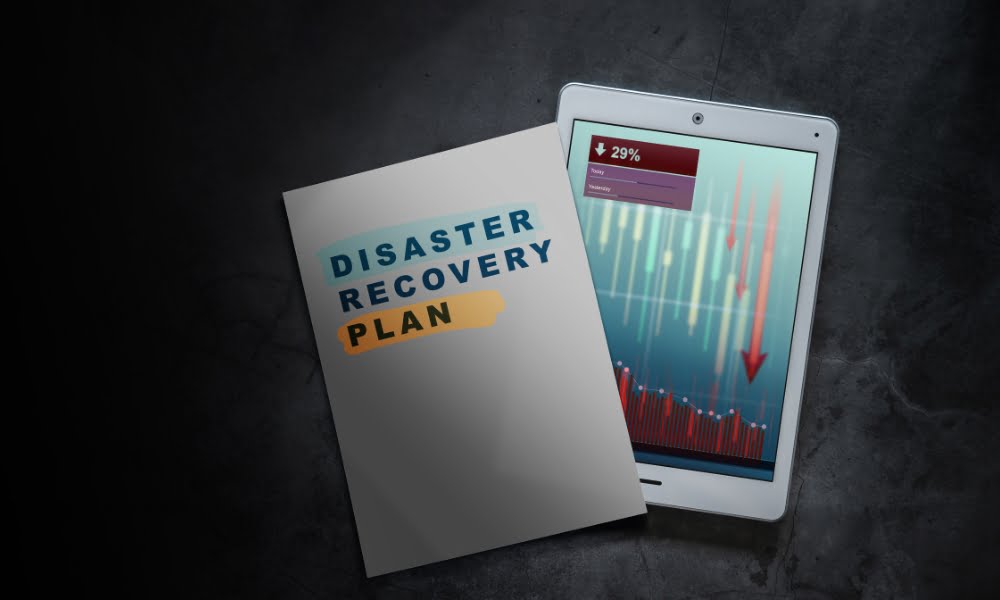Why You Need A Disaster Recovery Plan For Your IT

Each day you do business without a Disaster Recovery Plan for your IT, you are gambling with your company – and in today’s digital landscape, which is rampant with cyber security risks, the odds are increasingly stacked against you.
When it comes to IT, a business-busting disaster can wear many different faces. They’re all as deadly as one another, and in this article, we’ll cover each one.
But first, let’s give a quick overview of Disaster Recovery, and why it matters for your business.
What is Disaster Recovery?
Disaster Recovery is both a preventative and responsive solution that is put in place to help your business recover quickly from a disruptive event. It should cover everything, from a slight data loss, to ransomware attacks, or a catastrophic fire that burns down your entire building.
It provides a simple, step-by-step plan to get all of your data recovered, restored, and rebooted, preventing prolonged periods of downtime for your business.

Why is Disaster Recovery Important (According to the Numbers)?
It’s pretty clear that, for many businesses, Disaster Recovery takes a very low priority. In fact, research has shown that 75% of small businesses have no disaster recovery objective plan in place. This stat becomes all the more alarming when you read that 93% of companies without Disaster Recovery who suffer a major IT disaster are out of business within one year.
And it’s not surprising, considering the hourly costs of downtime. According to Datto: “An hour of downtime costs £6,038 for a small company, £55,851 for a medium company and £528,325 for a large enterprise.” While these figures will vary from business to business, the bottom line is universally clear: IT disasters are shockingly expensive.
On the flipside, another study showed that 96% of companies who did have a disaster recovery plan were able to survive ransomware attacks, and could fully recover their operations.
With these figures in mind, let’s take a look at the specific reasons why you need a disaster recovery plan for your business.
4 Reasons Why You Need a Disaster Recovery Plan for Your IT
1. Cyber Crime Pays
Malware infections are in constant development, and they grow smarter and more sophisticated every year. Their purpose is simple: to breach your network, steal your data, and leave your business in ruin.
One of the fastest-growing malware threats of the 21st century is Ransomware, a nasty piece of software that infects computers and mobiles, encrypts any file it can find, and then holds the data within those files to ransom. This is now a £10 billion-a-year industry; the payouts demanded by the hackers have frequently been reported to be in the millions.
Outrageous ransoms aside, a ransomware attack can cripple your business through the simple act of blocking your data. If you don’t have a Disaster Recovery Plan in place, and you rightly refuse to pay the hackers what they’re asking, your business could be out of action indefinitely.

2. Nature Giveth, Nature Taketh Away
Natural disasters are probably the last thing you think about with regard to your IT security. But that’s what makes them so deadly: they come out of absolutely nowhere and leave complete destruction in their wake.
Flooding is probably the most common natural disaster that could occur in the UK – but it could also be an earthquake, or a hurricane, or a fire. Basically, anything that would physically destroy your computers and/or your data centre.
Here at Liberate IT, we once had a client who had a flood in their server room. Though it didn’t destroy everything, it did affect their main server, which was responsible for all their systems and data. With our Disaster Recovery plan, we are able to retrieve their data and secure it on a spare server.
The flood was deeply unfortunate, but at the very least, we could rescue their data and get their business back up and running in no time.
3. Hardware Fails
More often than not, hardware faults are to blame for IT disasters. All it takes is something as mundane as a power outage, network issue, or faulty cable to threaten your data and trigger periods of infuriating downtime.
Keeping on top of hardware maintenance is the best way to prevent this from happening in the first place. Realistically, however, you don’t have the time to be monitoring, repairing, and upgrading every piece of kit that is being used by your business. When something inevitably goes wrong, therefore, you’ll be grateful for having a Disaster Recovery plan in place.
4. We Are Only Human
Human error is a thing. Where there are people, mistakes will eventually follow – and that’s OK.
Sure, it could be disastrous if someone forgets to save a document, or saves over important information, or somehow deletes an entire file (it happens). But these kinds of errors are to be expected in any workplace, and as long as you’re sufficiently backed up by a Disaster Recovery plan, then there’s no harm done.
Creating a Disaster Recovery Plan
Disaster Recovery is all about having a clear plan in place to assist you and your employees, and ultimately, to sustain your business.
On top of preventative measures such as cyber security, this involves using a secure, secondary infrastructure that hosts all of your data and systems. Should the worst happen, this secondary infrastructure will be ready to kick it at a moment’s notice, ensuring minimal downtime for your business.
It’s best to work with trusted IT professionals when putting together a Disaster Recovery Plan. Here at Liberate IT, we make sure that all our clients have a Disaster Recovery plan in place. We wouldn’t dream of going a day without one ourselves and believe that all our clients should have one included as part of our core offering.
For Disaster Recovery plans and much more, get in touch today!
